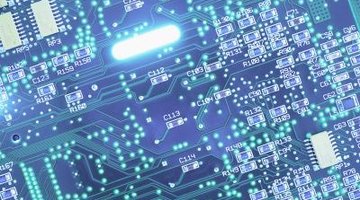Advancements in modern technologies -- such as CD-Roms, videotapes, flash drives, networks, printers, scanners and computers -- as well as ever-evolving Internet technology, including online education, have impacted schools in many ways. They have increased the overall access to education, reduced the cost of instruction, helped create learner-centered education and improved the quality of education through interactive learning.
Improved Access to Education
Possibly the most obvious and important technological impact on schools would be the global access to education; the Internet has virtually eliminated geographical and time isolation across the globe. Students from around the world can now have access to education instantly at their own convenience, thus eliminating the rigidity of the traditional brick-and-mortar education model. Furthermore, many schools now offer free Massive Open Online Courses, or MOOCs, to noncredit-seeking students from anywhere. Most of these courses are often videotaped, allowing even more access for students who might not be able to participate in virtual classes.
Reduced Cost of Instructional Operation
Another impact is reduced cost in running schools. Modern technology has eliminated costly infrastructure, such as a library, classrooms and dormitories. Similar to MOOCs, one teacher can teach an unlimited number of students via online courses; similarly, different libraries can form a consortium and become an ebrary or cybrary, allowing member students access. As a result, schools do not need traditional infrastructure other than the installation of Internet, as well as instructional technologies. Such cost reduction is in stark contrast to brick-and-mortar schools, where tuition has been on the rise, and is often too expensive to afford. According to the Federal Reserve Bank of New York, “The outstanding student loan balance now stands at about $870 billion, surpassing the total credit card balance ($693 billion) and the total auto loan balance ($730 billion).”
Learner-Centered Education
When a student uses any learning technology, such as a computer, she becomes an active learner, in charge of her learning activities and making choices and decisions. This learning process is a departure from being a passive recipient of information from her teacher, the traditional model. She can learn at her own pace, starting at the level where she feels comfortable. Similarly, modern technology has also changed the role of the teacher. Traditionally, the teacher has been the focal point in a class; now that role has become more indirect as a coach, mentor or facilitator who observes the process of learning activities around the student.
Improved Student Engagement
According to a recent U.S. Department Education study, “. . . on average, students (in a secondary educational setting) in online learning conditions performed better than those receiving face-to-face instruction.” Despite such positive impacts, the same study acknowledges that those findings might not be the same in different settings, such as in medical studies or in higher education. However, technology and its impacts in modern life have become ubiquitous; in fact, some schools use cellphone technology to deliver educational instruction.
Related Articles
References
Writer Bio
Dr. Yoon Kim earned a Ph. D. in English from Oklahoma State University. His editing experience includes Ph.D. dissertations (English), and senior professor’s research articles (Psychology and Education) that are published in peer-reviewed professional journals.











